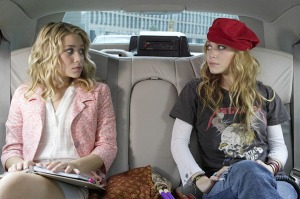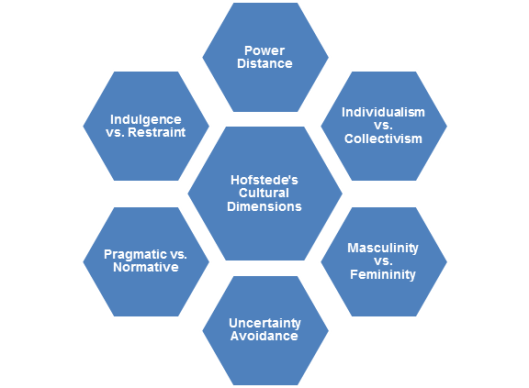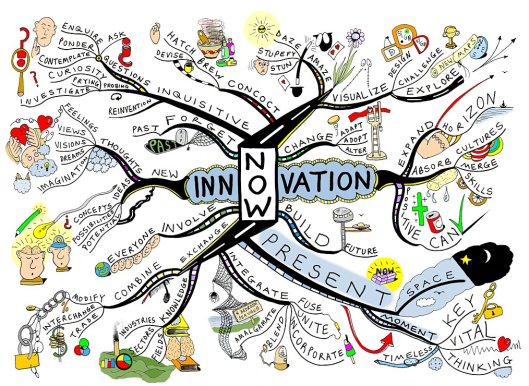 Some people argue that diverse teams deliver better performance (Thomson Reuters 2014, Deloitte 2011, McKinsey & Company 2012), while others believe that working with homogeneous members allows the team to coordinate well that will lead to optimal results (Mannix and Neale 2005, McCain et al. 1983). Both arguments need to be considered carefully. What does exactly this diversity mean? How does this diversity occur? What are the challenges that diverse team will face? How does diversity benefit the team’s performance? What is the role of the leader in diverse team?
Some people argue that diverse teams deliver better performance (Thomson Reuters 2014, Deloitte 2011, McKinsey & Company 2012), while others believe that working with homogeneous members allows the team to coordinate well that will lead to optimal results (Mannix and Neale 2005, McCain et al. 1983). Both arguments need to be considered carefully. What does exactly this diversity mean? How does this diversity occur? What are the challenges that diverse team will face? How does diversity benefit the team’s performance? What is the role of the leader in diverse team?
Diversity
Diversity here means difference not only limited to race and gender, but also culture, experience, style, generation, discipline, religion, social status, motivation, intelligence, abilities, perception and even personality. Every human was born with one unique identity that differ them from others,  even for twins that look exactly the same may have different personalities.
even for twins that look exactly the same may have different personalities.
Culture plays important roles in shaping people behaviour and personality. Despite of its limitations on bringing potential for stereotyping and the simplicity of model that may not truly accommodates the complexity of culture (Hanna 2005), Hofstede’s 6 cultural dimensions can still be used properly as a tool to compare the cultures and values between countries (Hofstede 2014).
Culture in one country will be different from other countries. For example, according to Hofstede survey, Indonesia as my home country scored 78 out of 100 in terms of power distance which is much higher than United Kingdom (UK) and United States (US) whose scores only 35 and 40 respectively. This suggests that there are more unequal rights between power holders and non-power holders, the rich is very rich while the poor is very poor and power is more centralised in Indonesia. The significant difference is also seen in individualism vs. collectivism scores between the three countries. Indonesia scored very low (14 out of 100), while UK and US produce contrast results which are 89 and 91 respectively. What do these numbers tell you? They indicate that most people in Indonesia are more concerned about their society where they are living in instead of their individual interests, while people in UK and US who perceived liberty and justice for all people are more individualistic. I need to remind you once again that this is a generalisation which perhaps leads to a stereotyping for certain individuals that might not applicable to them. However, these differences in culture may bring different behaviour and personality. For instance, most employees in Indonesia will more likely expect to be told what to do by their managers due to high gap in power. However, their relationship between their colleagues might be stronger than employees in UK and US because they will go for gathering together outside the work.
The Challenges
Perhaps you also realise by now that this cultural differences will be a challenge for diverse team. Imagine that employees from Indonesia which tends to help each other due to their collectivism culture needs to work with US employees who think about their individual success, what is the team going to be? A catastrophe I bet. Indonesian will think that US are so mean that they do not want to help them, while American will think that Indonesian are not capable to do the job.  Another example for cultural differences that can bring an obstacle for diverse team is different perception of time which could not be clearly explained by the simplicity of Hofstede’s cultural dimensions model. People in India perceived time in a polychronic manner where the meeting time is flexible, while British who values time think the time is fixed in monochronic. It means when Indian scheduled a meeting at 10 am in the morning, they may come at 11 and think of it as common and not consider it as late, however British who are already waiting for the meeting at exactly 10 am will consider it rude.
Another example for cultural differences that can bring an obstacle for diverse team is different perception of time which could not be clearly explained by the simplicity of Hofstede’s cultural dimensions model. People in India perceived time in a polychronic manner where the meeting time is flexible, while British who values time think the time is fixed in monochronic. It means when Indian scheduled a meeting at 10 am in the morning, they may come at 11 and think of it as common and not consider it as late, however British who are already waiting for the meeting at exactly 10 am will consider it rude.
I also have experienced the difficulty in diverse team while pursuing my Master of Business Administration at CULC. As the only one student from Indonesia in my class that consists of people from multicultural backgrounds such as India, Nigeria, Thailand, Belgium, China and Pakistan, I found it hard at the beginning to communicate with these people due to our different language level of understanding. I also confront challenges in my previous job as an audit analyst where I need to get in touch with other people from other departments that sometimes come from different disciplines which have different perception regarding the importance of information system and lead to a poor coordination. At home, I also find out that talking and understanding people from different generation is not easy.  Elder people sometimes have different perceptions for certain things and more experiences than us and they will more likely to teach and guide us, but younger generation most of the times do not agree with them and conflict is inevitable.
Elder people sometimes have different perceptions for certain things and more experiences than us and they will more likely to teach and guide us, but younger generation most of the times do not agree with them and conflict is inevitable.
Benefit of Diversity
Although diverse team confront many challenges where coordination is weak and conflict is more likely to happen (Mannix and Neale 2005, McCain et al. 1983), it is not impossible to develop better performance with diverse team as evidenced by Thomson Reuters (2014). According to Thomson Reuters (2014), gender diversity increased sales revenue for approximately $599.1 million, diversity can increase economic performance by as much as 2.2 times for profitability and 2 times stock valuation, companies with the highest rate of racial diversity brought in nearly 15 times more sales revenue than those in the lowest level, companies that embrace diversity have higher customer loyalty and companies that rank in the top quartile of executive-board diversity outperform those at the bottom by more than 53% in return of equity. Leading company such as JP Morgan Chase that embraces diversity and has two women executives and two women in Board’s members ranked in a second place according to S&P ratings in 2012 (Calvert Investments 2013) in which at the same time they also ranked number 4 for the world’s biggest companies in terms of its sales, profits, assets and market value (Forbes 2012). The evidence is clear that diverse team can bring competitive advantage to the company. Diverse team also brings more sustainable innovation and creativity because different ideas might be generated from different people.
Role of Leader
Role of leader in diverse team is highly required to ensure that the team works effectively. Leaders should be able to give clear direction to its team so that they understand what the team needs to achieve. They also need to utilise the power of diversity in creating innovation and creativity while at the same time shift the potential conflict into collaboration. As leaders, they need to acknowledge that there are differences between people and they need to respect those differences and bring the best out of them. Moreover, they need to understand that each person might have different motivation, therefore there is a need of effective communication with their team in order to gain broader picture of what motivates them. Only after gaining these information regarding their differences and motivation, the leaders can then decide the right tasks to be delegated to each members of the team and provide appropriate rewards or incentives for each individual. Leaders are also role models for their subordinates. Therefore, they have to show them their best attitudes towards diversity, respecting each person culture, ideas and perception. Most importantly, leaders should never judge their team members by their cultural stereotype.
You want to be a leader in diverse team? Then, stop judging a person by its cover!
References:
Calvert Investments (2013) Examining the Cracks in the Ceiling: A Survey of Corporate Diversity Practices of the S&P 100 – March 2013 [online] available from <http://www.calvert.com/nrc/literature/documents/BR10063.pdf> [15 June 2014]
Deloitte (2011) Only Skin Deep? Re-examining the Business Case for Diversity [online] available from <http://www.deloitte.com/assets/Dcom-Australia/Local%20Assets/Documents/Services/Consulting/ Human%20Capital/Diversity/Deloitte_Only_skin_deep_12_September_2011.pdf> [15 June 2014]
Forbes (2012) The World’s Biggest Companies [online] available from <http://www.forbes.com/sites/scottdecarlo/2012/04/18/the-worlds-biggest-companies/> [15 June 2014]
Hanna, M.E. (2005) Hofstede’s Cultural Dimensions: The Basics and The Criticisms [online] MS. Applied Psychology Thesis. Clemson University. available from <http://ioresearch.net/file_download/29> [15 June 2014]
Hofstede (2014) National Culture Dimensions [online] available from <http://geert-hofstede.com/dimensions.html> [15 June 2014]
Mannix, E. and Neale, M.A. (2005) ‘What Differences Make a Difference? The Promise and Reality of Diverse Teams in Organizations’ Psychological Science in the Public Interest [online] 6 (2), 31-55. available from <http://www.jstor.org/discover/10.2307/40062326?uid=2&uid=4&sid=21104149880387> [15 June 2014]
McCain et al. (1983) ‘The Effects of Departmental Demography on Turnover: The Case of a University’ The Academy of Management Journal. 26, 626-641
McKinsey & Company (2012) Women Matter: An Asian Perspective [online] available from <http://www.mckinsey.com/search.aspx?q=women+matter%3A+an+asian+perspective> [15 June 2014]
Thomson Reuters (2014) The Power of Us: Our Diversity and Inclusion Commitment [online] available from <http://thomsonreuters.com/corporate/about-us/diversity-inclusion/power-of-us-2014.pdf> [15 June 2014]



Nice article, i’m proud of being indonesian people,
As our national motto ” Bhinneka Tunggal Ika “, which is mean Unity in Diversity,.
Same as my experience at my job environment in multinational company,
Always meets potential conflict caused by different opinion come from different races and tribes,.. but still in one corridor, , since we realize that we are human, different makes us know each other, care each other,..
i think the different is beautiful,. ^_^
Thanks Dimas, I also agree with your idea that the differences are beautiful, that what make people unique in their own way. I also find it is interesting that you also have experienced diverse team. I believe that you have learned a lot from that diversity.
Diversity also can bring a different perspectives that will lead to balance of power in decision making. Due to the different of experience, vision and culture.
Completely agree to your statement that leader need to have a sense of diversity. He/she can adapt and welcome a diversity of opinion and vision in the decision making process.
A very useful article, bulski..
Hmmmm….interesting idea regarding the balance in power of decision making Farah. I absolutely agree that diversity will bring different perspectives for a particular situation which sometimes provides more alternatives to react or response in that situation. Therefore, the final decision can be made after considering those alternatives.
Diversity teaches us to respect, understand, develop frameworks. The key to enter in all the diversity of life are communication and good behavior adapts to the patterns, behaviors and habits. To get these things in life we give kindness, the beauty of life, and joy to everyone. Diversity makes us more alive, and more blessed. The difference was normal, but how to change the existing differences to be beautiful is the best way to resolve differences.
Your article gave me another perspective about Diversity.
Nice article Bulan… 🙂
Thanks Rizki, I would say communication itself is not enough to gain the best from diversity, but we need effective communication. Without effective communication within the team and also by the leader, those differences will only become differences.
Such an interesting article, as it’s related to psychology, my educational background.
In my opinion, working in a diverse team is more challenging yet will lead to better performance, because, as you wrote, there will be more ideas and points of view. However, to make sure that the team work effectively, every member of the team, not only the leader, needs to learn about tolerance and has to respect other people’s values and cultures. It’s the only way to prevent futher team conflicts, I guess.
I absolutely agree that all people in the team should learn about respecting other values and culture. And leaders on top of that, should definitely respect the differences because they are role models for them. Nice argument anyway Farraas. I believe all people need to have a leader characteristic because leader is actually not only restricted to title or position, but also the behaviour.
This should be common sense..
Being around different people opens one up to different perspective, traditions and beliefs.
It takes one out of the area they are familiar with and shows them there are individuals who aren’t always in agreement, and offers indivuals opportunity to see or experience or feel new things.
And who doesn’t learn from that?
Exactly, people will learn from diversity….they will find a new experience towards diverse team…good thought Dheta.
Great article. I agree that we have to stop judging a person by its cover. Judge a person by his/her competency or capabilities, not by their cultural stereotype.
Of course you are right Winda, judge people by their capabilities because it is an objective measurement, unlike cultural stereotype which is really subjective.
Such a good article and inspire me to accepted the differences. Not easy to work in diversity team but it’s true, there are many benefit we can get by diversity. I am totally agree that diversity provide us different perspective, that makes especially me learn something new and never ever judge people by their background.
Your article makes me understand about diversity easily. Thank you
Thank you Tika, by looking into different angles, people will not easily decide and judging others. The results from the decision will be more mature as it considers more different perspectives.
Good you analysed the benefits but as well the disadvantages of diverse teams because for me, diversity can be challenging in terms of communication, cultural differences, different habits, different time perception, working methods, … .
I like to work in a homogeneous team because our way of thinking, customs, culture and language are similar. But in my current MBA I discovered the benefits of diversity. Moreover, diversity in my class gave me a broader perspective and I learned a lot about other cultures and habits. In the future, I would like to work in a diverse team. I agree with you that diverse teams can only be successful and produce better results when they are well managed. What do you think are other actions for a company to improve the productivity of diverse teams? Maybe trainings? A company could stimulate employees to get to know each other outside work during a dinner with the company?
You are absolutely right celine. Training actually could improve both diverse and homogeneous team. Communication and building relationship outside work is even more important because most people will only show their true self in informal discussion. By getting to know more about them will help us to acknowledge our differences and perhaps we will focus more on finding our similarities instead. I would say company could actually provide a reward system which is fair for everyone and align with the company’s strategies, so that employees will not feel being discriminated and give them motivation to perform better.
Nice and interesting article for readers who want to know more about the important of diversity. So far, we assume that diversity was the things that might be hinder the productivity of a team at work but in fact diversity can bring more positive impacts. One of the challenges as a leader is how to able to lead their team may be have not only culture and attitude but also the perspective of the problems, mindset, and work ethic. In this part the role of leader is needed to combine each idea and suggestion from each team member and take final decision. For the next part, it might be add with real case problem from the company so the readers can understand how to apply in real situation. Finally, good luck for your next article. 🙂
Indeed Andaru, leaders should be able to collect all ideas from their members and consider all alternatives before making decision. Thanks a lot for the suggestion. I will provide more real case problems in my next articles.
Good article. It`s true that diverse team will face many challenges and often lead to conflict. But diversity gives us opportunity to find a lot of new things. This makes our life more colorful. Now the role of the team leader is to combine the differences, find the best solution when conflicts happens and influence/communicate the final solution. You`re right that it’s need understanding each other and good communication. Just look at their potency, ability and competence not their cultures.
Thank you Riani, I also agree with you that leaders should find the best solution when conflict happens and the solution must come from taking consideration of all different perspectives. Moreover, I think the leader must be highly objective in solving the problem, because sometimes cultural or race or gender diversity could be a bit sensitive that might lead to feeling discriminated. Therefore, the leader should find the best way to resolve the conflict in a win-win solution.